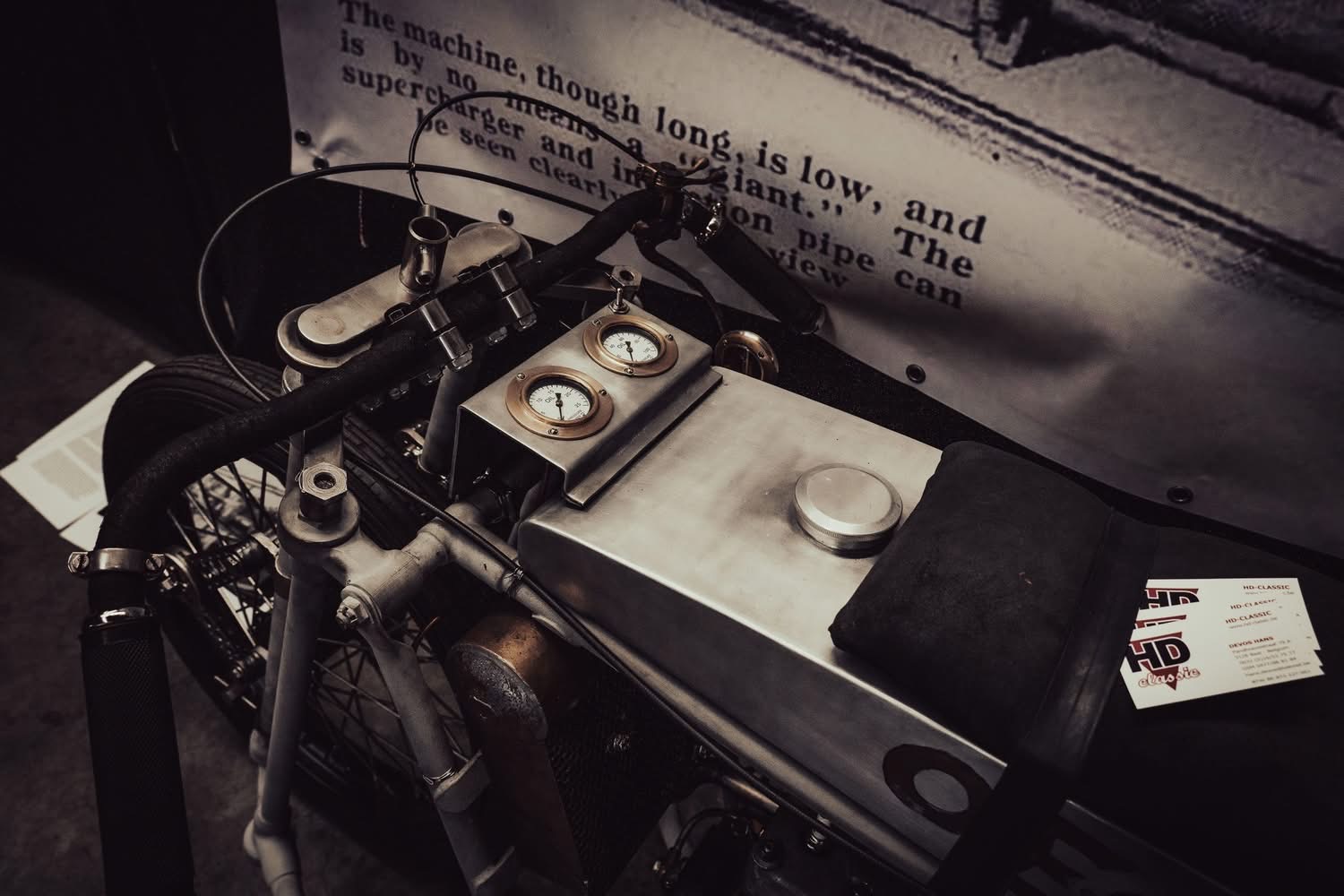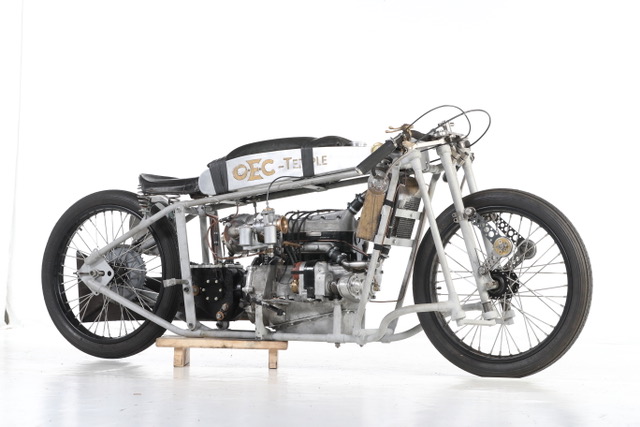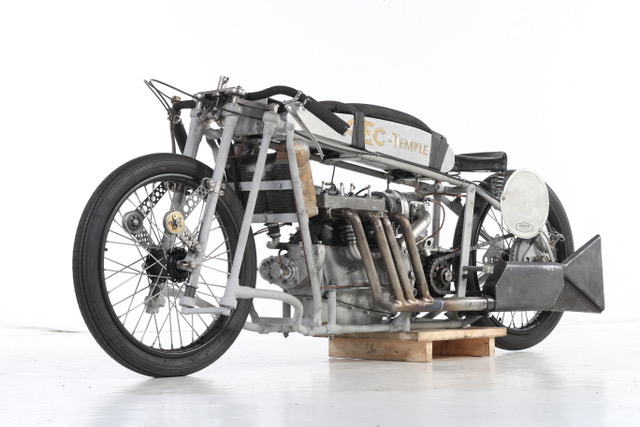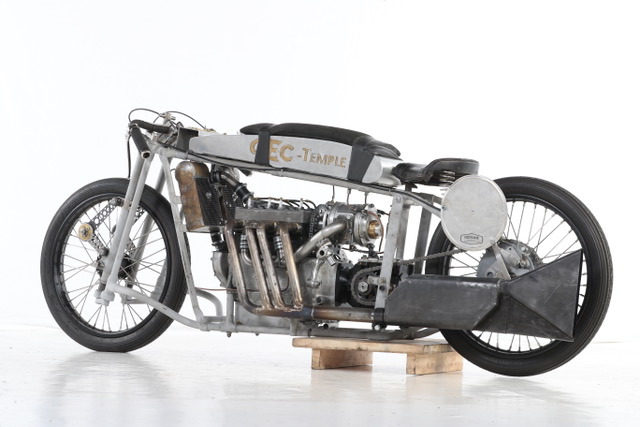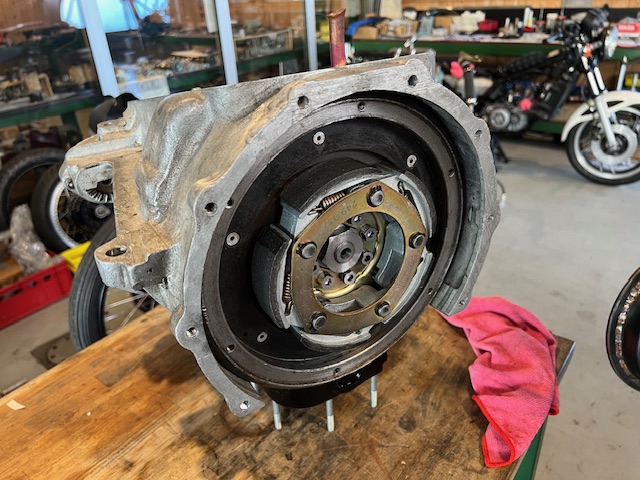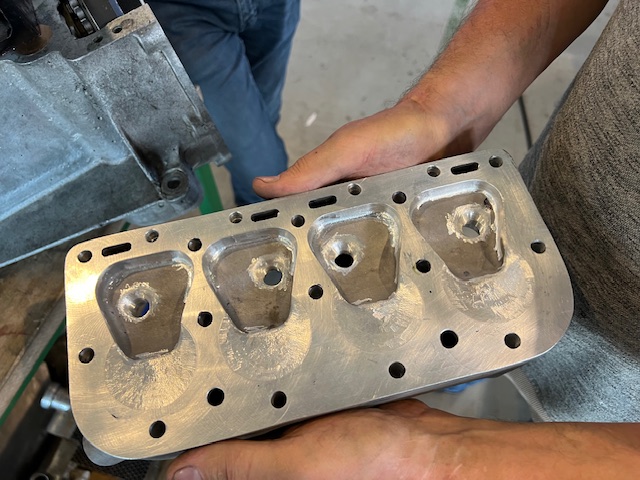
>
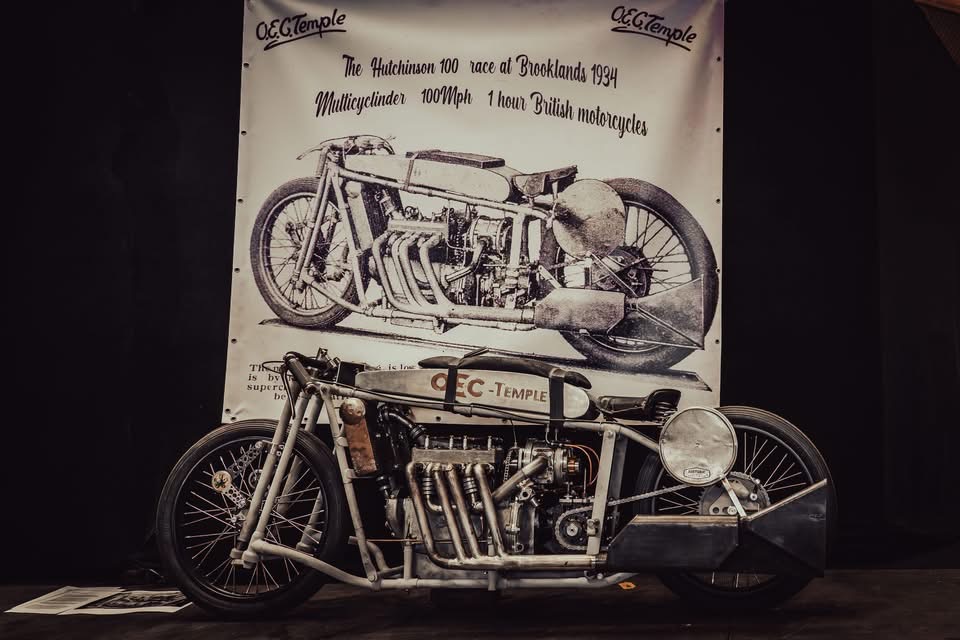
The history of a vanished land-speed record motorcycle....
The O.E.C.-Temple supercharged four cylinder
The OEC (The Osborn Engineering Company) led by Frederick Osborn.
His son John Osborn only really started to build motorcycles with an engine from " Burney& Blackburne" around 1922. Burney & Blackburne used to build complete motorcycles but decided to build only engines and deliver them to OEC. They then finished the rest. The first motorcycles with Blackburn engines were exhibited at the motorcycle show in November 1922 on a stand named " O.E.C.-Blackburne". Later they also used other engines, such as the OEC.-Atlanta and the OEC- Anzani. From then on, it was much easier to simply call these engines "OEC." Name.
Not much later, Claude Temple came on the scene. He was a racer and builder of land-speed record machines and has several records to his name. Through the designer of the Anzani engine, C. Temple came in contact with OEC. They used an Anzani engine and placed it in a Temple racing frame and managed to break the world speed record at Brooklands in 1923 with a speed of 174 km/h this is +/- 108 miles per hour. They even managed to break five speed records in 1925. Also, an OEC motorcycle was the first official motorcycle that could cover a distance of 102 miles in one hour. From 1926, OEC's brochures stated that they sold motorcycles that you could tour on but registered as a racer would be a worthy opponent! But as a local GP racer, it was difficult to gain world fame and thus boost sales. This did prove possible by breaking world records. Everyone knew the fastest motorcycles and riders in the world (just think of Ernst Henne with his supercharged BMW).
In 1926, an OEC Temple with 1000cc Jap engine broke the speed record ( which was in the name of Bert La Valck with a Brough Superior in 1924 ) at Arpajon France. It was noticed that the main problem in high speed records was the stability of the front fork on the uneven tracks and OEC continued to experiment. In 1927 they came up with a unique Duplex steering system. This steering system was so stable that it was difficult to take turns even at high speed. Because of this, you find this system mostly on speed record machines and not often on street bikes.
In1930 Joe Wright takes an OEC.-Temple-Jap with Duplex fork to Cork, Ireland to break a new record. That is how it is in the books but actually a speed attempt must be driven 2 times (in opposite directions) to be official. It was very strange that to break the record they used an OEC-Temple-Jap and provided an OEC-Temple-Zenith bike as a spare ( same Jap bike, duplex fork but with Zenith frame). Claude Temple was indeed the tuner of JAP- Zenith and Jap- OEC which both also used his frames. Probably OEC had no second spare bike and they took the Zenith as a backup. After the first, ride, due to a defect, the second ride cannot be accomplished. One had no choice but to turn on the Zenith and it achieved a better time. After the ride, they quietly disposed of the Zenith because the zenith brand was almost bankrupt and not really of much use anymore, and so they brought back the defective OEC -Temple- Jap as the record breaker.
Afterwards, this motorcycle was dismantled and the parts modified to serve as the basis for other record machines. Including an extended frame for a streamlined engine and even for a record machine with an Austin four-cylinder.
This Machine (OEC-Temple-Austin) They (wanted to) use for a record attempt. Due to the oversupply of top brands in the 1000cc class, OEC wanted to profile themselves in the 500cc class for the world hour record.For this they built a special racer with the famous Temple Frame, their own duplex front fork and a standard 750cc Austin seven four cylinder engine that was re-sleeved to 500cc. This gave you an engine with a very long stroke. With a bore of 46mm and a stroke of 76mm. Austin introduced a triple bearing crankshaft with a sprocket that provided drive for a centric supercharger mounted above the Morgen 90 degree bevel-drive clutch that angled to allow a sprocket and chain to drive the rear wheel. There was no gear beacon so this was a single-speed racer.
During the preparations of the long distance record attempt, an important part of the Beveldrive clutch broke down and the record attempt could not take place, because this was not a standard motorcycle part that you could quickly buy in a motorcycle store. Because you had to organize a speed record yourself, hire the official timekeepers, rent a circuit or long track like the one in Cork (Ireland) and have it closed and pay your team, it was a very expensive business. People then postponed the attempt to a later date, hopefully with good and necessarily dry weather. In the meantime, an AJS team had broken the existing record to such an extent that it was decided to dismantle and develop this bike too, without attempting a record attempt. All of this is also the reason why there is usually little or nothing to be found about the motorcycles that did not make it to a record attempt, because before the attempt everything is top secrets at a failed attempt the project was quietly dropped.
Obviously, the original parts will have been scattered here and there in various projects and most likely did not survive their hard lives. The special thing here is that we found a Temple frame and original Duplex fork, original engine and compressor. With these original parts we (re)built this motorcycle to perfection, just like they did back then!
Technical data of the modified engine:
Centric blower that starts blowing at 25t/m and maximum pressure of 20lbs/sq" at 6000 rpm giving a probable power output of 46 HP at 7000 rpm. About twice the safe rpm of a standard Austin engines 3 times more power than the original 17HP!
A sport Watmought cylinder head gave a better combustion chamber shape but the compression ratio remained almost the same right away-quite low 4.5:1.... Which is not a problem with a compressor, which has no need for high compression ratios or radical valve timing, to provide maximum power. In fact, a low camshaft with little valve overlap and no extreme valve opening is best when using a compressor. It is the compressor that allows the cylinder to fill completely with the fuel mixture and so there is no need for complicated, costly and fragile tuning applications. By working with a very low compression ratio there is a greater chance that the engine will not be blown up by the greatly increased horsepower...
A Scott radiator was used to keep the engine cool. The OEC. used glycol instead of the usual water which was a novelty at the time.
The Temple frame was modified to accommodate all these components and the speed was estimated at 190km/h this is +/- 118 miles per hour. Which was an unprecedented speed during long distance races such as the "Hutchington 100 miles race" even with a wheelbase of 150cm.
OEC was not the only brand to use an Austin 7 engine. Brough superior also used it in its top models.
Brand:
OEC - Temple
Type:
World record bike
Year:
1934
Bid
Feel free to contact us for larger photos or more information.






